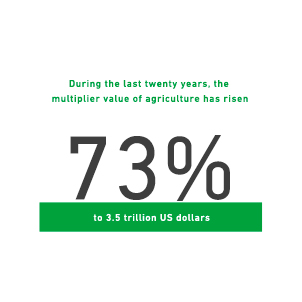“Mashroo3k Company offers a comprehensive feasibility study for the Nursery Plants project in Egypt, with the highest profitability and best payback period, based on accurate market research, competitor strategy analysis, and competitive price proposals.

A plant nursery provides a dedicated space for the production of flowers, vegetable seedlings, fruits, and various ornamental plants, intended for planting in gardens, fields, and orchards. The nursery relies on specialized equipment for gardening, including seeds, fertilizers, suitable soil, chemicals, and pesticides. Nurseries are one of the key factors for the success of agricultural development in any country, as they support agricultural production plans and contribute to the expansion of greenhouse projects.
Mashoo3k Consultancy offers investors interested in investing in a plant nursery in Egypt a range of specialized feasibility studies, based on updated databases specific to the Egyptian market, helping to ensure the project’s success, achieve the highest profit return, and the best payback period.



Products of the highest quality.
Application of approved quality standards.
Implementation of approved health regulations.
Latest manufacturing and packaging technologies.
Management of developmental and marketing ideas to enhance competitive advantages
Executive summary
Study project services/products
Market Size Analysis.
Risk Assessment.

Agricultural production sector in the GCC countries
There is no doubt that the agricultural sector is of great importance today in the world’s economies; as it helps achieve self-sufficiency and food security, reduces the spread of unemployment and alleviates the burden of poverty, and is the main source of raw materials for many manufacturing industries. This vital sector employs about 935.6 million workers, representing 28.3% of the global workforce.
Global agricultural production sector
Over the past 20 years, the added value of agriculture has increased by 73% to reach US$3.5 trillion.
Agriculture accounts for 4% of global GDP.
Agriculture employs 874 million people, representing about 27% of the world’s total workforce.
4.8 billion hectares is the total agricultural area in the world, divided into (3.2 billion hectares of meadows and pastures and 1.6 billion hectares of crops).
The total global production of primary crops is 9.4 billion tons.
The total global production of red and white meats is 337 million tons.
The total global production of fruits is 883 million tons.
The total global production of vegetables is 1,128 million tons.
The total global production of vegetable oils is 201 million tons.
The total global production of dairy is 883 million tons.
The total global production of eggs is 83 million tons.

According to the Food and Agriculture Organization of the United Nations (FAO), hunger is on the rise, with the number of undernourished people worldwide rising to 770 million; a large number that we hope agriculture and its products will help reduce. It is noteworthy that agricultural land around the world decreased by 127 million hectares between 2000 and 2019 (roughly the size of Niger), while forest area decreased by 94 million hectares (the size of the United Republic of Tanzania) during the same period. These numbers are undoubtedly somewhat unsettling, especially since the world’s population is increasing; therefore, Mashroo3k supports investment under the umbrella of the agricultural sector in order to keep pace with the demand for food.